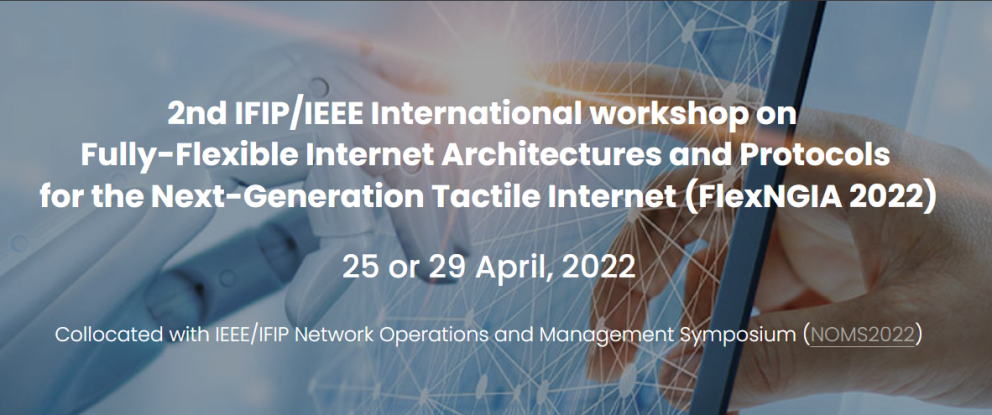Co-located with IEEE/IFIP Network Operations and Management Symposium (NOMS2022)
Call For Papers
The rise of edge, cloud, and in-network computing and the proliferation of Artificial Intelligence (AI) and Machine Learning (ML) is promoting the development of innovative applications like virtual/augmented reality, holography, telepresence, autonomous systems, remotely controlled robotics, and tactile applications, promising to revolutionize health-care, transportation, industry, agriculture, society, and culture. However, to deploy such applications and to comply with their requirements, there is a need for a Tactile Internet that, according to the International Telecommunication Union (ITU), combines ultra-low latency with extremely high availability, reliability, and security.
Unfortunately, the current Internet architecture and protocols fall short when it comes to providing such requirements due to several fundamental design and implementation limitations. As a result, there is a compelling need to rethink the Internet architecture and protocols to overcome those limitations by efficiently harnessing recent technological advances in terms of virtualization, network softwarization, network function virtualization, software-defined networking, data plane programmability, and even if the tenets of the current Internet should be broken. Such novel architectures and protocols are embodied in several initiatives like FlexNGIA (https://www.FlexNGIA.net) or projects like Teraflow (https://www.teraflow-h2020.eu), working towards building new architectures or improving parts of existing architectures in order to improve their flexibility and enable novel network services and management schemes adapted to the requirements of future applications.
Topics of Interest
The topics addressed in this workshop include but are not limited to:
-
Analysis of the characteristics and requirements of future network applications.
-
Gap analysis highlights the limitations of the traditional Internet architecture and protocols and their inability to cater to future applications’ requirements.
-
Design and evaluation of new architectural paradigms and communication protocols as well as network management schemes based on AI/ML and distributed decision making.
-
Use cases and specific applications and potential mechanisms, protocols, and schemes to ensure the performance and reliability required by future applications including the move to Industry 5.0 and 6G networks.
-
Solutions to further develop a full-fledged architecture by addressing key research challenges including service function chaining, functional decomposition, alternative Network/Transport protocols, resource management, signaling, design of high-performance virtual network functions and services, high-precision communications, monitoring, measurements and in-network telemetry, inter-domain management, and security and privacy. (please check FlexNGIA Research Challenges)
Paper Submission
Authors are invited to submit original contributions. Submitted manuscripts should use IEEE 2-column conference style and are limited to 6 pages (including references).
The submission link will be available here soon!
Important Dates
-
Paper submission deadline: January 9, 2022
-
Acceptance notification: February 13, 2022
-
Camera-ready submission: February 27, 2022
